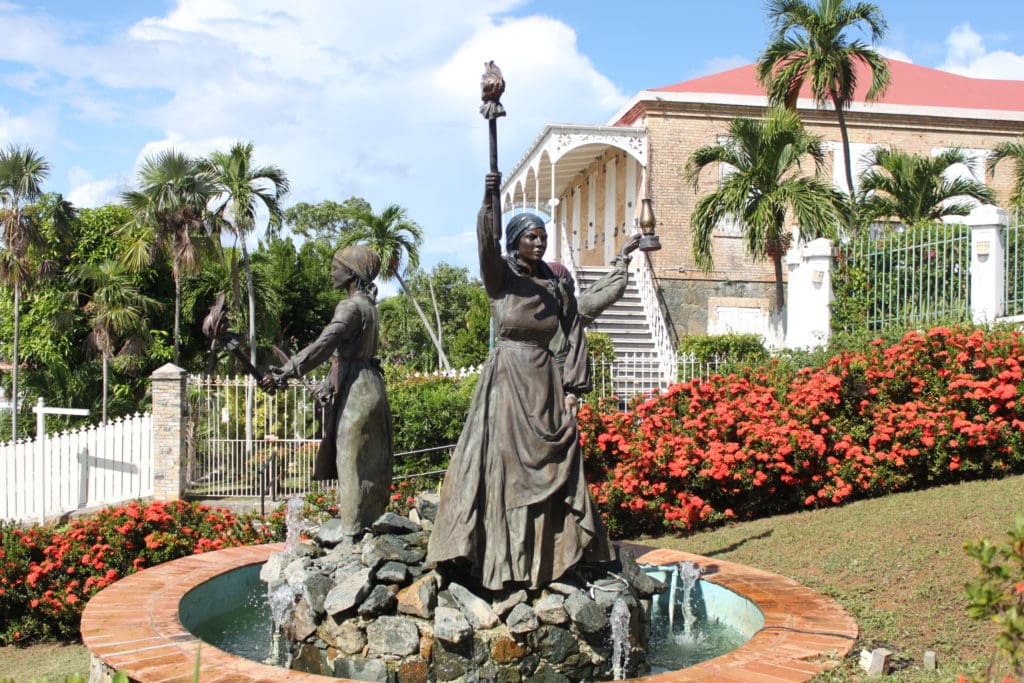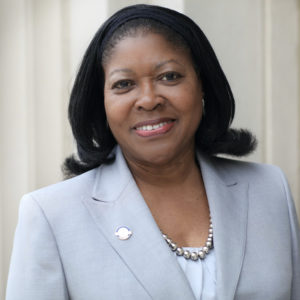
This is the first in a series on notable Virgin Islands women in honor of Virgin Islands History Month and Women’s History Month.

The most impactful influences of my life came from that of my father and mother, the late Warren and Eugenia Brown. They instilled in all their children a drive to succeed and serve our community. There was never a question of where that community might be at any given time of our lives, but rather that we could make a difference in whatever role we took to serve.
Influence is one variable and action is the other ingredient to making an impact in any society. In 1972, during my second year of college, I was asked to write an essay about the importance of the women’s liberation movement. I instead submitted a report that spoke of the numerous accomplishments of the women of the U.S. Virgin Islands, women who in their own right had chosen to combine the traditional roles of wife and mother and at the same time proceeded to make an important impact on their community. A women’s “lib” movement, in view of the experience I had lived in my own community of strong, politically and socially involved women, seemed ironic to me. With the encouragement of my professor, I started what would become a more than 20-year attempt to make this project – researching and writing a book on USVI women – a reality.
In 2017, on the centennial anniversary of the Virgin Islands transfer from Danish rule to a U.S. territory, I shared the 50th Anniversary Friends of Denmark publication with Virgin Islander Ronnie Lockhart. My father had written an article about the economic and political future of the Virgin Islands for that publication. The Friends of Denmark decided to not only republish the 50th-anniversary issue but to do a new publication and I was asked to write an article. I decided to do an excerpt from the 30-plus years of research on my book on women of the Virgin Islands. The following, during this year’s celebration of V.I. History and Women’s History month, is some of that work.
Caribbean women’s history, what little of it that has been reported, focuses on African and African Caribbean women, to paraphrase the editors of the book “Engendering History: Caribbean Women in Historical Perspective” by Verene Shepherd, Bridget Brereton and Barbara Bailey. But the history also includes white European, mixed-race and Asian women.
“The Caribbean, after all, represents a diversity of ethnic groups, the result of the great voluntary and involuntary migratory movements from the 16th century,” Shepard and her co-editors wrote. “The historiography must recognize the different experience of women according to race or ethnicity, caste, class, color, age, nationality, language, location [rural vs. urban] and occupation.”
One cannot view the accomplishments of women of the Danish West Indies and the U.S. Virgin Islands, then and now, without including the numerous nationalities of women who have made an impact on its growth and development. The Virgin Islands has been the recipient of the combined contribution of numerous women of courage and stature who, alongside their male counterparts, made the Virgin Islands what it was and what it is today and have left a guide for the future.
Rosalyn Terborg-Penn, a contributing author to the “Engendering History” book, writes, “In 19th century St. Croix, women not only resisted oppression but were defined as leaders who were redefining economic roles that Black women took on the island thereafter.”
Women of African, Spanish, Creole, European, Indian, Jewish and Danish heritage comprise the list of notable achievers; a reflection of the global, transient and connected nature of these Virgin Islands.
The first V.I. female attorney, the late Clarice Bryan, in her 1967 bicentennial article 50 years ago, wrote of the many attributes that contributed to the charm and steadfastness of the women of the day. She described a woman who loved her God, home, family, neighbor and the Virgin Islands. She opened her heart, her home and her beloved Virgin Islands to all. She was a proud and competent woman. Today, the Virgin Islands woman remains all that and more.
A fire continues to burn in the hearts of women of the Virgin Islands who have worn the “red badge of courage” to make a difference and impact on these islands from the early days through more than 100 years as American citizens. Perhaps we can credit their strength and perseverance to such forbearers as Queen Mary and coal workers Queens Coziah and Brefu.
Maybe we can credit their independent spirit of involvement to a love for their home by birth or adoption. They had a fearless approach; they were women who, long ago and in modern times, stepped forward to help change the course of history. These Virgin Islands women would charge forward to influence the lives of citizens and forge a progressive society for themselves, their children and their communities. It is evident that the opportunity to effect change had little to do with one’s gender but more so with one’s preparation and courage to take the reins of leadership.
The most important factor to the development of this attitude had to do with the supportive culture of a community with some makings of a matriarchal society. A cooperative spirit among women to be important contributors gave rise to their significant accomplishments. These are women who triumphed, in spite of the obstacles of colonialism and patriarchy to achieve personal and community goals. They had the fire, passion and courage to take charge of their own direction and that of the community.
Who is this Virgin Islands Woman? Queen Mary Thomas
To say that Mary Thomas of the 1878 Fireburn can be the model or an example of the Virgin Island woman would be stretching the values and mores of women to questionable limits. Yet, no other woman has received the notoriety and revered recognition as Queen Mary, mother of the 1878 labor uprising on St. Croix.
During the summer of 1878, the women of St. Croix played an important role in forcing the enactment of the Labor Act of the day. Thirty years after the emancipation of the slaves, women and men were working for what they declared was a pittance. Queen Mary’s role was much more than that of leader; she also was an organizer, motivator and instigator.
An 1849 Danish labor law on St. Croix had established fixed salaries and conditions for plantation workers. Workers were also prevented from bargaining for better wages. In addition, the Danish government established requirements that made it difficult for workers to leave the island to find work on other islands. This cauldron of burning heat would lead to an uprising.
Who was this woman who led a revolt that would impact labor in the Danish West Indies, and what were her attributes that contributed to her competence and guts to do so? Mary Thomas came to St. Croix from the island of Antigua, where she was born.
She arrived around the 1860s and resided at Sprat Hall Plantation. It was not unusual for free men and women to move throughout the island chains of the Caribbean, going where there was work. Mary, who had never been married, had three children and history tells that she was an independent and forceful woman. She had faced sentencing for stealing and child abuse prior to the uprising.
It was important that the men followed her lead. Queen Mary had the respect and support of men in the community. This may have seemed unusual in societies where men were the leaders and decision-makers. In African societies, however, women carried community goals. Their behaviors were easily transferred to the new world. This status probably helps to explain the frequent presence of great queens and other significant women leaders in ancient Africa.
Queen Mary was a leader among her fellow workers. They gave her the title “queen,” though during the uprising she preferred the title “captain.” On Oct. 1, 1878, two other women were at Queen Mary’s side, marching through the streets with torches, machetes and knives. They were Queen Agnes and Queen Mathilda. The workers chose Queen Mary to lead the charge and she performed as the driving catalyst for burning down practically all of Frederiksted. Queen Mary was about 40 years of age at the time. There were men in the crowd, but history writes that the women were more driven and determined to inflict pain and destruction. Queen Mary gave orders that any worker not joining the insurrection should be decapitated. The rebellion would burn down homes, plantations and sugar mills on St. Croix. More than 400 people were arrested. It became known as “Fireburn, the Uprising of 1878.” Queen Mary and the other queens were arrested and sent to Denmark. However, they were later returned to St. Croix to finish their confinement.
Queen Mary has been celebrated in song for her role in the uprising. The song is thought to have first been sung in the 1880s, shortly after Fireburn occurred.
Queen Mary, ah where you gon go burn?
Don’ ask meh nothing t’all
Just geh me de match an oil
Bassin Jailhouse, where ah gon go burn.
The uprising was significant for workers as well as for Denmark. This single event marked Oct. 1, which is referred to as Contract Day, a date on which the annual contracts of the workers were signed, forcing them to stay on plantations. Queen Mary, even in her sentencing and determined spirit, impressed the Danish government. Today, she remains a woman of great impact in West Indian history. She is the first Black woman to have a statue erected in her honor in Copenhagen, Denmark. The statue is a collaboration of two female artists, Danish artist Jeannette Ehlers and Virgin Islands artist La Vaughn Bell. On St. Thomas, a statue of the three queens is on Blackbeard Hill and the Queen Mary Highway on St. Croix is named in her honor.
About the author: Debra Adelita Brown DeLone is a third-generation Virgin Islander with ancestral roots on the islands of St. Thomas and St. Croix. She has worked in the private and government sectors of St. Thomas for 45 years and has been a community contributor for more than 40 years. She has a bachelor’s degree in human service administration and a master’s degree in public administration. She is the past president of the League of Women Voters ’98 and a past president of Rotary Club Charlotte Amalie. She is married to professor William DeLone, formerly with the University of the Virgin Islands, and has a daughter, Andrea Brown-White and two stepchildren Tim and Niki DeLone. She resides in Rockville, Maryland, and enjoys spending time with her grandchildren, Alonzo IV, August and Thayre Marie.